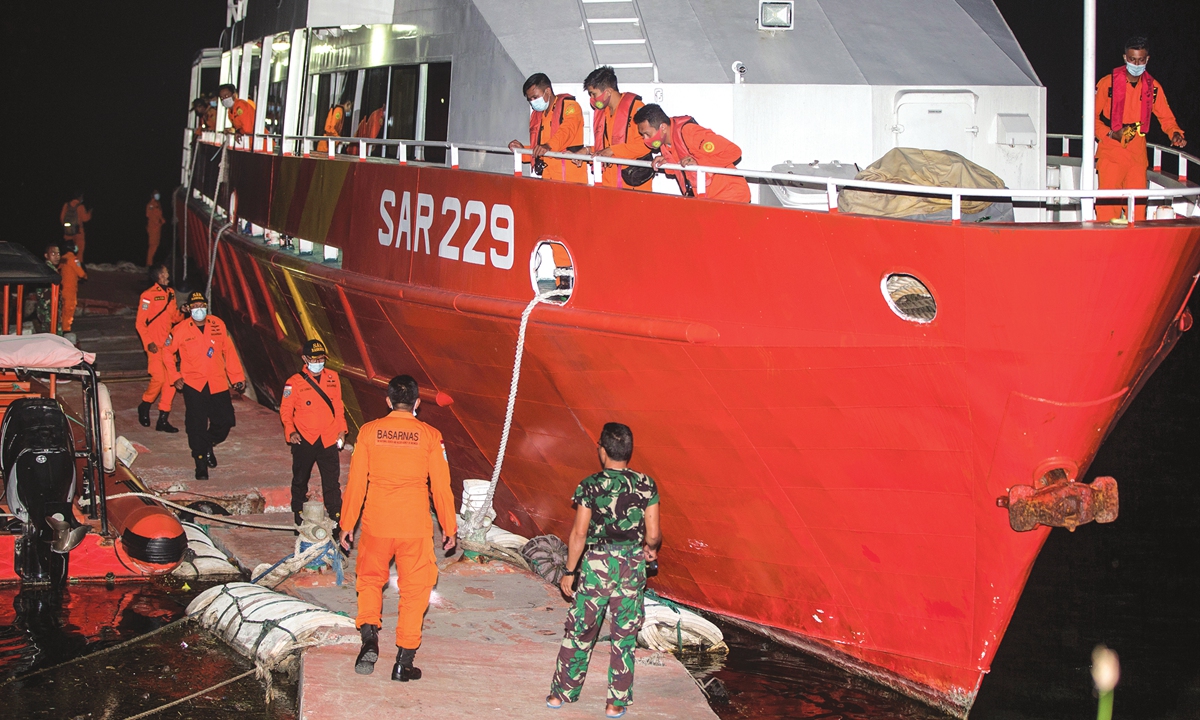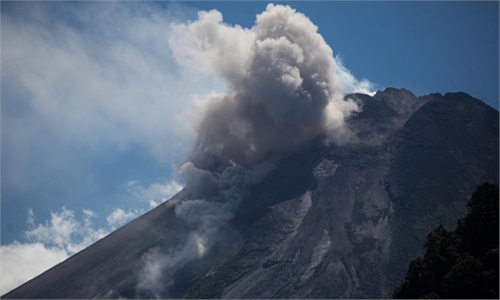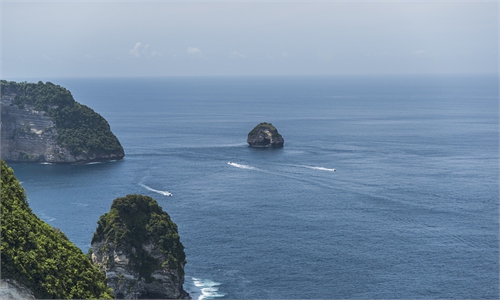Indonesia races to find missing submarine with 53 crew members aboard
Indonesia races to find missing submarine with 53 aboard
Indonesian warships led the hunt Thursday for a submarine that went missing with 53 crew aboard and only enough oxygen for a few days.

The crew on the KRI Nanggala 402 could have enough oxygen until early Saturday, but time was quickly running out as rescuers scoured the coast off holiday island Bali where it disappeared.
"The submarine's oxygen reserve capacity in a blackout is 72 hours," Navy Chief of Staff Yudo Margono told reporters. "There's time until Saturday around 3:00 am. Let's hope we can find them before then."
However, defense analysts have warned that the vessel could have broken into pieces if it had sunk to depths believed to be as much as 700 meters.
Australian Defence Minister Peter Dutton said initial reports raised the prospect of "a terrible tragedy."
The German-built submarine was scheduled to conduct live torpedo exercises when it asked for permission to dive. It lost contact shortly after.
Navy spokesman Julius Widjojono said Thursday that search teams were focused on an area around the oil slick, but that the exact location of the vessel had yet to be pinpointed.
Six warships and a helicopter have been sent to look for the sub, the navy said.
Other nations including the US, Australia, France and Germany have offered help.
"It's very distressing for families and particularly for the Indonesian navy," Australian Foreign Minister Marise Payne told broadcaster ABC.
"We've indicated that we will help in any way we can."
Neighbouring Singapore and Malaysia have already dispatched ships that are expected to arrive in the coming days, including the city-state's MV Swift Rescue - a submarine rescue vessel.
The military has so far refused comment about whether the submarine, carrying 53 crew, was over capacity.
On Wednesday, the navy said the submarine might have sunk to vast depths.
"It's possible... a blackout occurred so the vessel couldn't be controlled and emergency procedures could not be launched and this caused it to go down to 600 or 700 meters," it said.
Antoine Beaussant, a French navy vice admiral, said the submarine was not built to withstand those depths.

Members of National Search and Rescue Agency prepare for a search mission in Bali, Indonesia on Wednesday. Photo: VCG
An oil spill where the submarine was thought to have submerged early Wednesday pointed to possible damage to its fuel tank, and fanned fears of a deadly disaster.The crew on the KRI Nanggala 402 could have enough oxygen until early Saturday, but time was quickly running out as rescuers scoured the coast off holiday island Bali where it disappeared.
"The submarine's oxygen reserve capacity in a blackout is 72 hours," Navy Chief of Staff Yudo Margono told reporters. "There's time until Saturday around 3:00 am. Let's hope we can find them before then."
However, defense analysts have warned that the vessel could have broken into pieces if it had sunk to depths believed to be as much as 700 meters.
Australian Defence Minister Peter Dutton said initial reports raised the prospect of "a terrible tragedy."
The German-built submarine was scheduled to conduct live torpedo exercises when it asked for permission to dive. It lost contact shortly after.
Navy spokesman Julius Widjojono said Thursday that search teams were focused on an area around the oil slick, but that the exact location of the vessel had yet to be pinpointed.
Six warships and a helicopter have been sent to look for the sub, the navy said.
Other nations including the US, Australia, France and Germany have offered help.
"It's very distressing for families and particularly for the Indonesian navy," Australian Foreign Minister Marise Payne told broadcaster ABC.
"We've indicated that we will help in any way we can."
Neighbouring Singapore and Malaysia have already dispatched ships that are expected to arrive in the coming days, including the city-state's MV Swift Rescue - a submarine rescue vessel.
The military has so far refused comment about whether the submarine, carrying 53 crew, was over capacity.
On Wednesday, the navy said the submarine might have sunk to vast depths.
"It's possible... a blackout occurred so the vessel couldn't be controlled and emergency procedures could not be launched and this caused it to go down to 600 or 700 meters," it said.
Antoine Beaussant, a French navy vice admiral, said the submarine was not built to withstand those depths.




